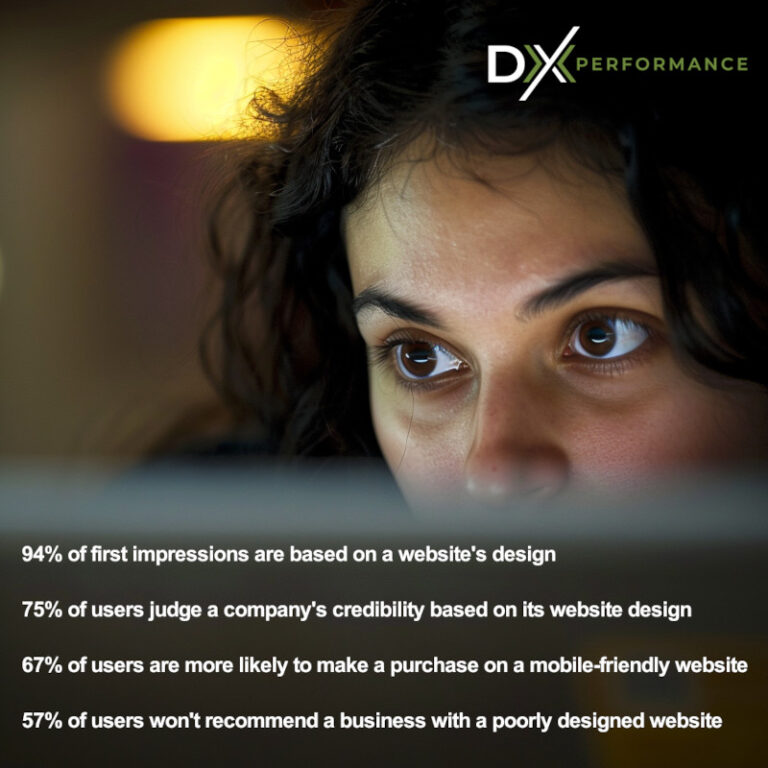
In the fast-paced digital world, first impressions are more important than ever. Imagine you’re walking down a street and see an enticing ad in a shop window. Intrigued, you step inside, only to find the interior chaotic, unwelcoming, and difficult to navigate. Chances are, you’d quickly leave and take your business elsewhere. This same principle applies to your business’s online presence. Your website is the digital storefront, and it’s crucial that it makes a positive, lasting impression.
Why First Impressions Matter
When potential customers click on a digital ad, they expect to be directed to a polished and professional website that reflects the quality and reliability of the business. A well-designed website serves as the first point of contact between your business and potential customers. Here’s why this initial impression is so vital:
Trust and Credibility: A sleek, professional website instantly establishes credibility. Visitors are more likely to trust a business that has invested in its online presence. Conversely, a poorly designed website can raise doubts about the legitimacy and quality of your services or products.
Brand Image: Your website is a direct reflection of your brand. The colors, fonts, images, and overall design should align with your brand identity, creating a cohesive experience that reinforces your brand message. Consistency in branding builds recognition and trust.
User Experience: A well-designed website ensures a seamless and intuitive user experience. Easy navigation, quick load times, and a responsive design that looks great on all devices contribute to a positive user experience. If visitors struggle to find information or navigate your site, they are likely to leave in frustration.
Content That Converts
While aesthetics are important, content is the true driver of conversions. Once visitors are impressed by the look and feel of your website, engaging and persuasive content is what will entice them to take action. Here’s how to make your content work for you:
Clear Messaging: Your website should clearly communicate who you are, what you offer, and why visitors should choose you over competitors. Use concise, compelling headlines and subheadings to guide visitors through your site.
Value Proposition: Highlight the unique value your business provides. Whether it’s superior quality, exceptional service, or unbeatable prices, make sure your value proposition is front and center. This helps visitors quickly understand the benefits of choosing your business.
Calls to Action (CTAs): Effective CTAs are crucial for converting visitors into customers. Whether it’s signing up for a newsletter, requesting a quote, or making a purchase, your CTAs should be prominently displayed and easy to complete. Use action-oriented language and create a sense of urgency to encourage immediate action.
Trust Signals: Incorporate trust signals such as customer testimonials, reviews, case studies, and industry certifications. These elements provide social proof and reassure visitors that they are making a wise choice by engaging with your business.
Informative Content: Provide valuable, informative content that addresses the needs and pain points of your target audience. Blog posts, FAQs, and resource guides can position your business as an authority in your industry and keep visitors engaged.
The Bottom Line
A well-designed website is not just a nice-to-have; it’s a critical component of a successful digital marketing strategy. It’s the destination where your digital ads lead potential customers, and it plays a pivotal role in shaping their perception of your business. Investing in a professional, user-friendly website with compelling content can significantly enhance your chances of converting visitors into loyal customers.
In the digital age, your website is your most powerful marketing tool. Make sure it leaves a lasting impression that drives business growth.
